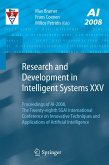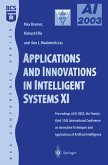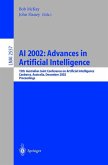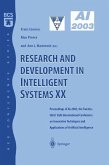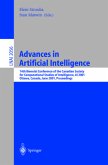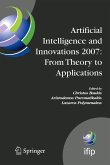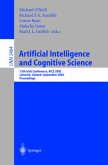The papers in this volume are the refereed application papers presented at AI-2008, the Twenty-eighth SGAI International Conference on Innovative Techniques and Applications of Artificial Intelligence, held in Cambridge in December 2008.
They present new and innovative applications of artificial intelligence across a wide range of domains; divided into sections on Machine Learning, Web Technologies, Intelligent Systems and AI in Health Care. The volume also includes the text of short papers presented as posters at the conference.
This is the sixteenth volume in the Application and Innovations series, which offers an annual snapshot of the latest applications of artificial intelligence across industry, commerce, education and government.
The Technical Stream papers are published as a companion volume under the title Research and Development in Intelligent Systems XXV.
Swallowing sound recognition is an important task in bioengineering that could be employed in systems for automated swallowing assessment and diagnosis of abnormally high rate of swallowing (aerophagia) [1], which is the primary mode of ingesting excessive amounts of air, and swallowing dysfunction (dysphagia) [2]-[5], that may lead to aspiration, choking, and even death. Dysphagia represents a major problem in rehabilitation of stroke and head injury patients. In current clinical practice videofluoroscopic swallow study (VFSS) is the gold standard for diagnosis of swallowing disorders. However, VFSS is a ti- consuming procedure performed only in a clinical setting. VFSS also results in some radiation exposure. Therefore, various non-invasive methods are proposed for swallowing assessment based on evaluation of swallowing signals, recorded by microphones and/or accelerometers and analyzed by digital signal processing techniques [2]-[5]. Swallowing sounds are caused by a bolus passing through pharynx. It is possible to use swallowing sounds to determine pharyngeal phase of the swallow and characteristics of the bolus [2].
They present new and innovative applications of artificial intelligence across a wide range of domains; divided into sections on Machine Learning, Web Technologies, Intelligent Systems and AI in Health Care. The volume also includes the text of short papers presented as posters at the conference.
This is the sixteenth volume in the Application and Innovations series, which offers an annual snapshot of the latest applications of artificial intelligence across industry, commerce, education and government.
The Technical Stream papers are published as a companion volume under the title Research and Development in Intelligent Systems XXV.
Swallowing sound recognition is an important task in bioengineering that could be employed in systems for automated swallowing assessment and diagnosis of abnormally high rate of swallowing (aerophagia) [1], which is the primary mode of ingesting excessive amounts of air, and swallowing dysfunction (dysphagia) [2]-[5], that may lead to aspiration, choking, and even death. Dysphagia represents a major problem in rehabilitation of stroke and head injury patients. In current clinical practice videofluoroscopic swallow study (VFSS) is the gold standard for diagnosis of swallowing disorders. However, VFSS is a ti- consuming procedure performed only in a clinical setting. VFSS also results in some radiation exposure. Therefore, various non-invasive methods are proposed for swallowing assessment based on evaluation of swallowing signals, recorded by microphones and/or accelerometers and analyzed by digital signal processing techniques [2]-[5]. Swallowing sounds are caused by a bolus passing through pharynx. It is possible to use swallowing sounds to determine pharyngeal phase of the swallow and characteristics of the bolus [2].


